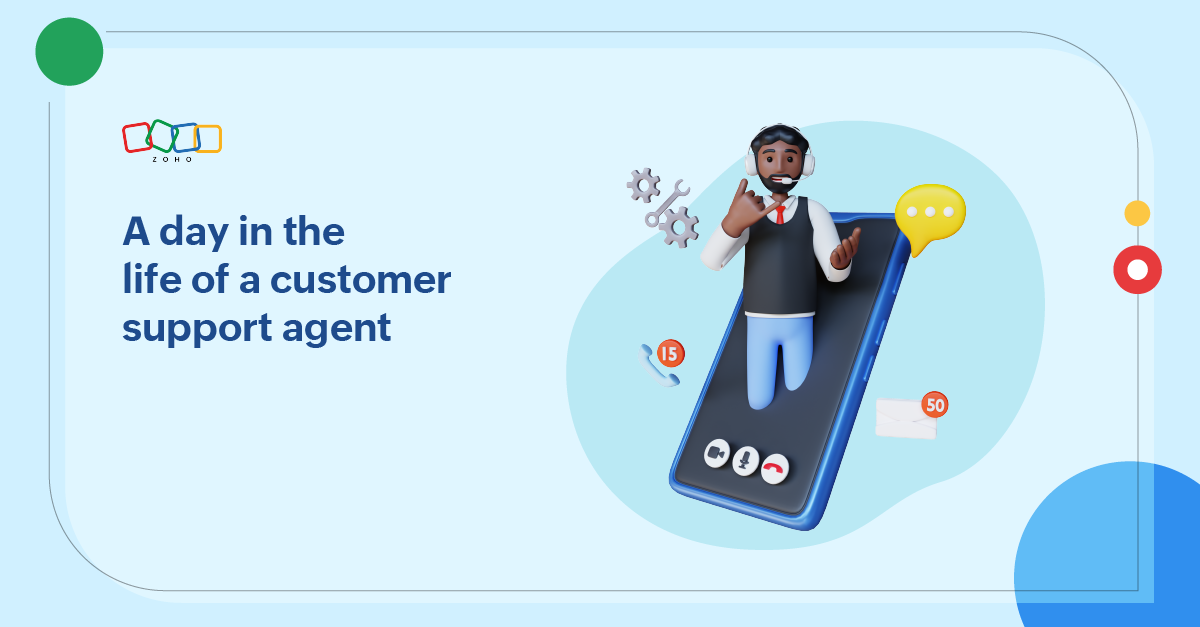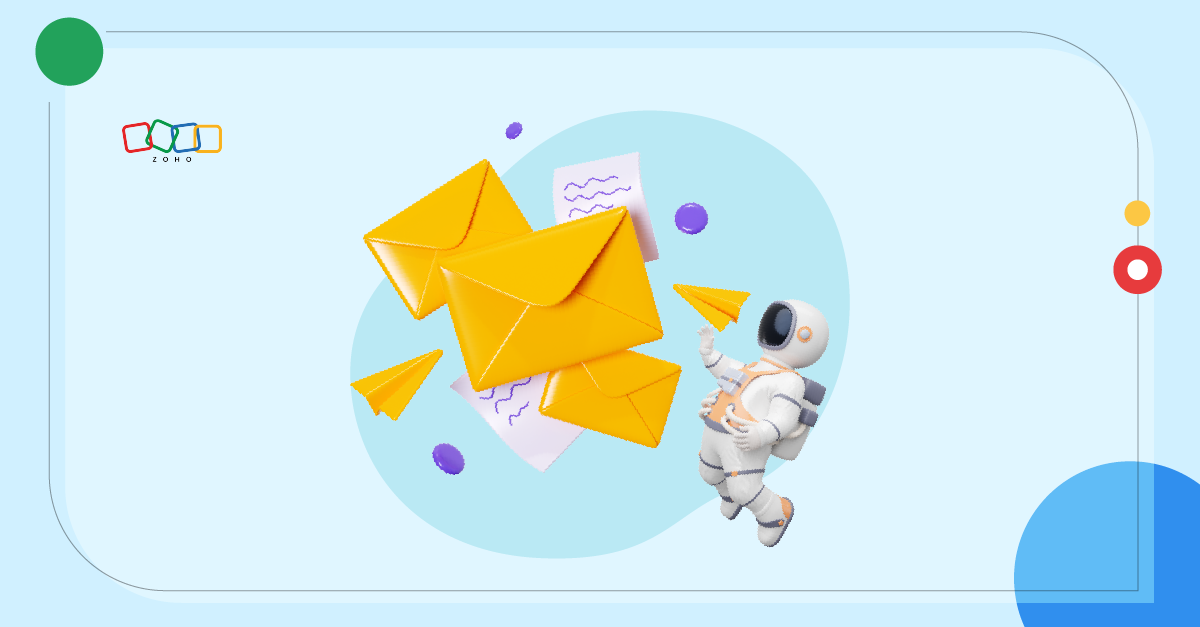- HOME
- Thought leadership
- Collaboration: the missing piece in the customer support
Collaboration: the missing piece in the customer support
- Published : October 11, 2022
- Last Updated : November 2, 2023
- 470 Views
- 8 Min Read
Sam is a level two support representative at a fast-growing SaaS start-up. The company caters to marketing teams, and its platform targets large enterprises. It also offers point products that start-ups and SMBs use in marketing operations.
Sam feels his job is challenging, yet very exciting. He defines his role as largely customer facing, handling product-related issues for users and helping them make the best use of their tools.
However, we all know that there's always more to it.
Sam spends a quarter of his day helping customers troubleshoot technical issues or giving implementation demos. Another quarter of his day is spent responding to customers on their issues or tickets. But he spends a major chunk of his day on non-customer-facing tasks, such as finding solutions from previous cases in the knowledge base, working issue life cycles, assigning tasks, passing tickets to level three representatives whenever necessary, closing resolved tickets, training level one support, and monitoring available tools, among others.
Sam’s role involves as much, if not more, interactions with different teams within the organization, as he does with clients.
On most days after work, Sam picks up takeout: a medium cheese pizza from his regular place, Regina Pizzeria, and resumes playing Call of Duty: WWII from where he left off the previous night.
Sam is a cheerful and hardworking young professional who is very enthusiastic about his work. Often regarded as a resource who goes the extra mile to deliver support to customers, he often receives special mentions from key accounts for his excellent support. As a result, Sam was awarded a pat on the back for two consecutive quarters from the CEO.
On a Friday afternoon, the CEO invites Sam to lunch and allows Sam to pick the place. Sensing where this is leading, Sam picks his favorite pizza place and they end up in Regina Pizzeria with a large cheese pizza.
The CEO jumps right to the point and asks, “So tell me Sam, why do you want to move out of the support team? I hear you have asked both the marketing and sales teams if they have an open position?”
“Any team would be willing to have you in a blink, but you have been a star in the support team and I am curious to learn why you are desperate to move roles.”
Your customer support agent wants to move to the sales team
The CEO worries that if their star customer service agent leaves, it would create a noticeable gap on the team. To replace someone with Sam's technical skills would take at least a month of steep learning of all the product training, much less understanding and implementing the platform. Someone with the passion and motivation with which Sam conducts his job would be hard to find. But, the CEO doesn’t want to deny Sam a career path he wants to take.
The CEO hears Sam’s reasons for a change of team with keen interest.
Sam talks about how he thinks that sales and marketing are the profit centers of any business and how he wants to see himself driving profit for the company.
He talks about the measures of success in support functions, about the recently deployed surveys to measure the support team's productivity, and how he's drawn by metric-driven growth in sales and marketing functions.
Sam also explains that he enjoys interacting with customers, and how he's motivated by the sales dashboard. He tells the CEO that he has the dashboard open all the time to read about deals won and lost, and that he wants to work on the number of lost deals to bring the number down.
The CEO is surprised that Sam doesn't have a single complaint or issue about his current job, which the CEO was anticipating and was prepared to fix. Even about the pizza place, Sam only has positive things to say—the consistency in taste over time and how it takes exactly takes 8 minutes to bake it. The CEO is impressed with how Sam speaks only positively about his colleagues, their newly launched product, the pizza place, his experience with the PS3 games, and more.
So, what’s bothering your customer support agent?
The company’s leadership suspects that there is more to it than what Sam could articulate to the CEO. So a senior director, a sales veteran, offers to meet with Sam.
One Friday they meet at Regina Pizzeria for lunch. This time, the director wants to understand what frustrates Sam about his work the most. Sam begins explaining.
"For the last six quarters, ever since the support team introduced the Customer Experience Score survey on their response channel, the score has been changing between 3 and 5, and the net promoter score also varies with no apparent pattern, despite all the efforts from the customer support team," Sam says.
Sam goes on to explain how they've improved their knowledge base and uploaded more than 50,000 words of help page content and 10+ hours of demo videos, all of which were indexed based on the subject keywords. They also added new SOPs and training modules for level one support teams, worked on reducing call wait time, and improved first-call resolution.
“Sam, by SaaS industry standards, these numbers indicate excellent performance of the support team. You and your team are putting efforts in the right direction that will help the company in retaining our valuable key accounts for a long time," the senior director tells him.
Then the senior director asks, "Why don't you explain to me some of the bottlenecks that are specific to your work?"
Sam thought about how to answer, before explaining: "We have often faced bottlenecks with work items reaching from level one to level two support. L1 might be well within their turnaround time working on the issue, but it leaves very little time for the L2 to resolve the issue within the SLA by the time hand-off happens. Also, the time of day that the work item comes into an L2 agent’s queue has an impact, such as whether the item should end up in the agent’s queue when their work day ends in an hour or should it be assigned to the next shift’s agent when they might have a backlog."
Sam continues: "But the actual problem is passing on the knowledge, materials, and conversations that the agents gather on each issue/ticket. When they have to move the ticket across levels or among agents, the context gained cannot be passed on efficiently."
"Sam," says the senior director. "With the growing volume of incoming tickets, it's high time we implemented a customer help desk tool, don’t you think?"
New tool, new silos.
Sam agrees that an intelligent system that could forecast and assign issues to the right agent, pull up the history of conversations with the customer to give more context, provide self-service, and include all of the other multi-department and advanced help desk features would help to ease the strain.
"But we also need a tool that does not create new silos," Sam says.
“Interesting," the senior director answers. "What kind of silos?”
Sam grabs a napkin and a pen, draws a series of circles, and begins to explain his thoughts.

"Structurally, the support team is part of the customer service team. However, we're only one of their many level two teams. In fact, a major chunk of level two support is given by the sales teams on inquiries concerning subscription plan upgrades, extending discounts or trial periods, and more," he begins.
"In our case, as you know, the buck doesn't always stop with us. Our team has a considerable amount of coordination with product managers, development teams, IT teams, and others. We have a number of informal triage sessions with these teams on a regular basis. At least 50% of customer issue emails are forwarded to these teams to give more context, provide references and validation, or, sometimes, they also trigger a new workflow in those departments—such as an incident or problem workflow, a feature request, or a custom configuration." Sam continues.
"New systems and processes, if not well thought-out, bring the risk of creating unnecessary silos and restricting access to the customers' issues to the right teams," Sam finishes.
“Very insightful Sam," the senior director tells him. "In fact, there was a discussion in the last board meeting on making ours a more inclusive workplace. For example, some of the things we talked about are having distribution lists include stakeholders across the departments, and making release workflows more transparent for the technical partners."
"In a growing organization like ours, each team would like a highly functional system for themselves for better productivity. We don't realize how these disparate systems, when not integrated to bring better context, might lead to silos within the organization,” the senior director explains.
A few weeks after the meeting with the senior director, Sam is entrusted with the responsibility of working with the company's IT team to define the right workflow and then identify, evaluate, and implement the right customer support tool for their organization.
The IT person suggests that Sam use the shared inbox tool that their team is using for internal support.
A shared inbox as a lightweight customer support tool?
Sam and the IT person study the standard operating procedures of the customer service department and the support team, and draft their expectations in the shared inbox tool for their use case.
The shared inbox tool should allow teams to create unified inboxes for different group IDs based on their requirements. The IDs are then linked to the corresponding mailboxes (e.g., product-support@company.com for queries and report issues regarding the product; upgrade-plan@company.com for queries related to subscriptions, pricing plans, upgrades, and more from the chat channel in the respective pages; hello@company.com for ad hoc service inquiries, etc.) and relevant members are allowed to be added to the group ID. Teams should be able to create temporary groups around ongoing projects/campaigns.
The email status should change for everyone in the group for actions performed by any group members, such as responding, adding tags, color coding, assigning email to themselves or other group members, archiving, snoozing, and more.
The support agents should be able to add members to groups and initiate conversations on emails for a seamless collaboration within and across teams (e.g., the agent tags the product manager on the customer’s mail and discusses the issue.) They can initiate a conversation using the chat function with any stakeholders right within the mail without forwarding it, and seamlessly share all knowledge gained on the issue without losing context.
The team should define rules and configure the workflow of emails delivered to group inboxes. For example, the teams can automate responses with pre-set help documents based on their subject.
Teams should be able to draft pre-set templates for repeat emails (such as standard troubleshooting procedures), create automated signatures, and use them as they send emails from group inboxes.
Teams should be able to leverage analytics, track insights on inboxes and members, and audit activity logs to see if they align with the set SLAs and measure their productivity.
The tool should be integrated with multiple customer channels, pulling data from across internal systems, such as a CRM, and all past conversations for better context.
Sam is able to work on closing all the gaps that he identified earlier. He works with the IT team to implement the shared inbox for all customer-facing engagement, and sets up a roadmap to make the workflow more efficient. He also sets up a dashboard that displays the availability and performance of their applications for customers to access from within the product.
Sam continues working with the customer support team on a vision to create a consistent and superior customer experience inspired by his favorite place, Regina Pizzeria, who for years had unfailingly delivered a consistent pizza experience for him as a customer.
- Sandeep Kotla
Sandeep is an inbound marketer with Zoho Corporation. Previously, he handled analyst relations and corporate marketing for ManageEngine (a division of Zoho Corp) and its suite of IT management products. He currently spends most of his time re-imagining and writing about how work gets done in large organizations, reading numerous newsletters, and Marie Kondo-ing his inbox.











